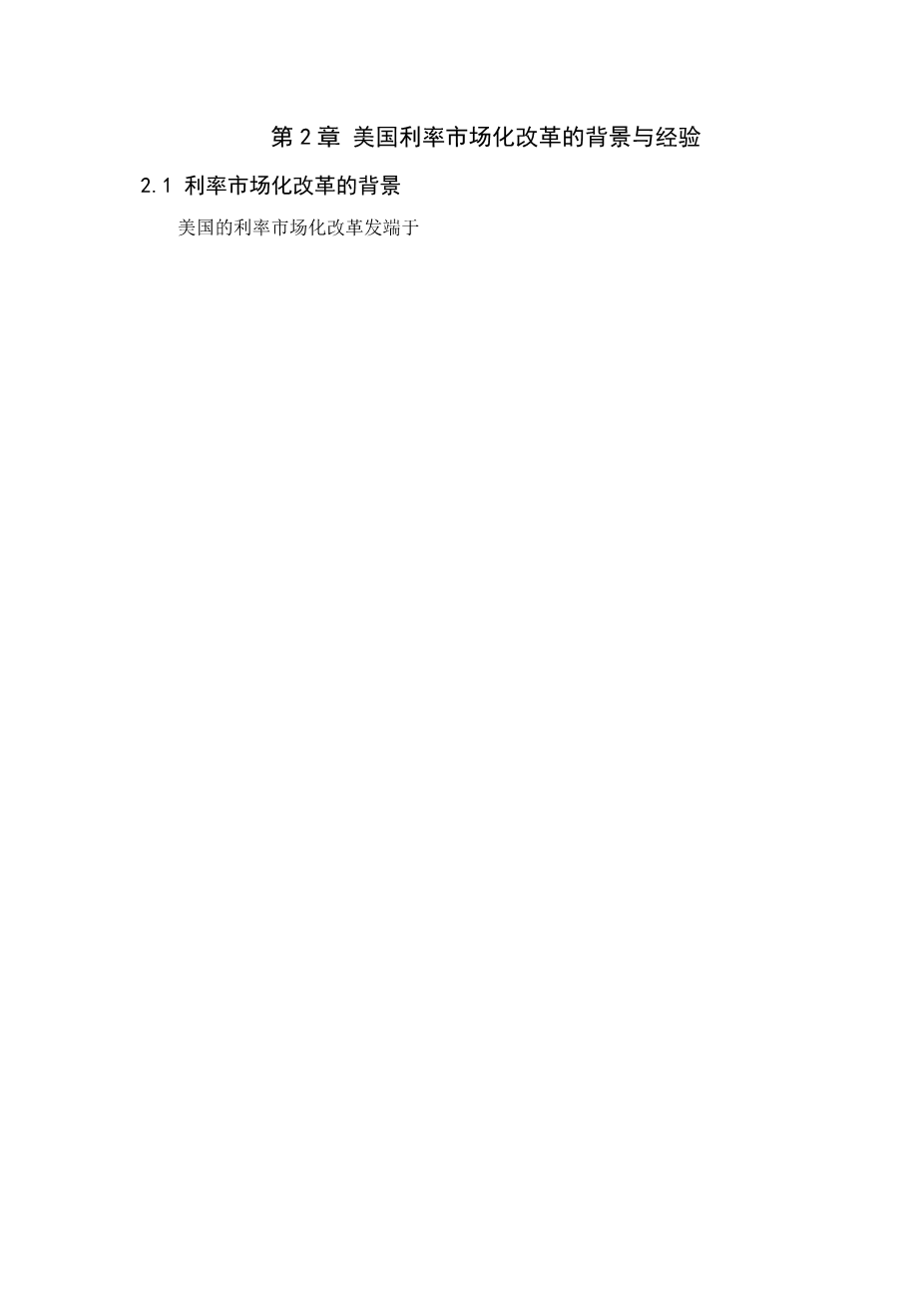The research of interest rate marketization reform in USA
Abstract
This article through to the United States in the 1980 s background and analysis of the process of market-oriented interest rate reform, focuses on its assets and liabilities business of bank, the intermediary business transformation and the influence of industry concentration. In this paper, research shows that interest rate marketization leads to narrowing trend spreads, but as a result of loan assets proportion of ascension, reform is done early to bank net interest margin impact is smaller. But with the improvement of the market-oriented interest rate reform and the deepening of financial disintermediation, net interest margins are still showed a trend of decline. In addition, the marketization of interest rate of bank has obvious promoting effect to the intermediary business transformation, and strengthened the industry competition, and improves the industry concentration.
Keywords: Banking; Interest rate marketization; Financial disintermediation
1 Introduction
Market-oriented interest rate reform, namely the official control relaxed lending and deposit rates, remove the protection of bank spreads, make money prices determined by market supply and demand fully. Despite the lending and deposit rates will rise obviously, but the bank spreads is still likely to narrow. On the one hand, the loan interest rate cap already let go, the marketization degree is higher. By bank loan quality customer competition, the economy is still in a downward adjustment stage and local debt restructuring and other factors, the loan interest rate raise co., LTD. On the other hand, in the economic structure adjustment and change of the pattern of economic growth, against the background of overall tight liquidity will show the overall trend of the future society, commercial bank deposit growth will also be a slowing trend. Since 2012 foreign exchange of the change of the situation and tensions of monetary market and in 2013 fully illustrates this point. For a long time, commercial Banks mainly deposits as a source of funds, and bank business transformation needs certain process, future liabilities business competition between Banks will increase further, deposit rates will rise more obvious, the marketization of interest rates on deposits level will gradually rise and close to financial returns. Many countries have successively realized the marketization of interest rate in the past few decades, has a more far-reaching influence on the financial system.
2 Background and experience of U.S. interest rate marketization reform
2.1 The background of market-oriented interest rate reform
The market-oriented interest rate reform started in the mid 1970 s, is a sign of official start in 1980 the deposit-taking institutions deregulation and monetary control act promulgated. Ease rate control is to adapt to the economic development situation and the inevitable choice of the evolution of financial markets and policies and the improvement of the legislation passed to promote step by step. The process of marketization of interest rate, is actually a constantly of Q regulations issued by the relaxation after a major crisis in the 1930 s, the financial system step by step to realize the process of liberalization. The main purpose of regulation Q is by limiting the bank deposit interest rate cap to control the cost of operation, guarantee bank profits, to avoid collapse. But since the 1960 s, the United States the rate of inflation rising, the two oil crises in the 70 s led to economic slowdown, rising inflation, interest rates control makes the commercial bank cannot cope with high inflation rates of macro economic environment. Us inflation as high as 12.3% by the end of 1974, surged to a record 14.8% in March, 1980, at the same time, market interest rates rise sharply, the three-month Treasury interest rates in the early 1980 s up to 15%.But the high limit is far lower than the market interest rates, bank deposit rates led to bank financing source of tension, the interest rate control has been developed from the early to protect bank profits, a normal business for Banks. Vigorous development of financial innovation to the marketization of interest rate also forms "reversed transmission". In the 1970 s, such as money market mutual funds to avoid interest rate controls the rapid growth of financial instruments, at the same time, commercial paper, such as rapid development of capital market, is the impact of depository institutions funding sources.
2.2 The process of market-oriented interest rate reform
The United States until the 1980 s the interest rate control is mainly regulation Q restrictions on deposit interest rate cap, part of the state also provides the loan interest rate upper limit. Market-oriented reform basic follow the following order: cancel the large deposit interest rate cap, cancel the loan interest rate cap, cancel the regular savings rate upper limit in stages, to broaden the scope of business, etc. Since the early 1970 s, the U.S. has cancelled the different lines of large negotiable certificates of deposit and deposit interest rate upper limit control, allowed some deadline of savings deposit interest rates and Treasury yields. In 1980 introduced the deposit-taking institutions deregulation and monetary control act, in the form of law to determine the development direction of the interest rate marketization, the main contents include: as of March 31, 1980, after six years until March 31, 1986, in stages to cancel "regulation Q" for all depository institutions held on a regular basis and the interest rate for the savings account restrictions; Cancel the loan interest rate upper limit; Allow savings institutions across the country to carry out NOW account and ATM account business. But at the beginning of the reform, the bank financin
剩余内容已隐藏,支付完成后下载完整资料


英语译文共 8 页,剩余内容已隐藏,支付完成后下载完整资料
资料编号:[486933],资料为PDF文档或Word文档,PDF文档可免费转换为Word
以上是毕业论文外文翻译,课题毕业论文、任务书、文献综述、开题报告、程序设计、图纸设计等资料可联系客服协助查找。


